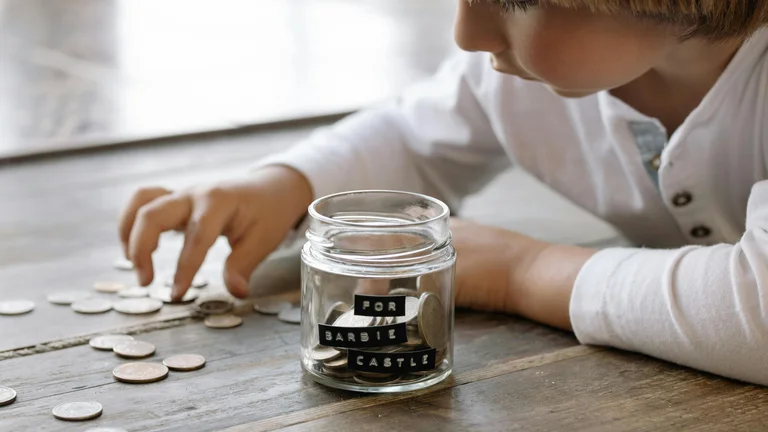Understanding Money Basics

Before children can manage their finances, they need to understand the basics of money. What is money? Money is a tool for trade. It allows people to exchange goods and services. Teaching kids the value of various denominations, such as coins and paper currency, is crucial. You can start small by using everyday items and associating them with their price. Use a toy store or grocery store as a relatable context. Let them handle different amounts of money, reinforcing that each piece has value.
The Importance of Saving
Saving money is an important lesson that kids can learn early. You can explain saving as setting aside money for future needs. Children often want toys and treats. Encourage them to save part of their allowance or money they receive as gifts. Create a 'saving jar' system where they can visually see their savings grow. Discuss short-term versus long-term goals. Short-term might involve saving for a toy, while long-term could mean saving for a bike. This helps them understand patience and delayed gratification.
Setting Up a Budget
Budgeting is a practical skill that everyone needs. Start by explaining what a budget is: a plan for spending and saving money. Create a simple budget outline with your child. Use their allowance or any income they have. Help them categorize their money into savings, spending, and sharing. Use real-world examples to make it relatable. If they're saving for a video game, help them calculate how much they need to save weekly to reach that goal. Budgeting should feel like a fun activity rather than a chore.
Incorporating Fun Activities
Learning about saving and budgeting doesn't have to be boring. Include games, apps, and activities. Board games like Monopoly introduce financial concepts in a playful way. You can also utilize apps tailored for children that teach them the basics of finance. Challenge them with fun savings goals, like a family pizza night, where they save to contribute to the meal. Use creative methods, like having them draw or craft their goals, to increase engagement and retention of the information.
Real-Life Application
The best way for children to learn is through real experiences. Take them with you when grocery shopping. Provide them a set budget and ask for their input on making purchases. This allows them to apply their budgeting skills in a real-world setting. Encourage them to ask questions about prices and choices, fostering critical thinking. Let them make mistakes. If they overspend, talk about what went wrong and how they could adjust their spending next time. Real-life application turns theory into practice.
| Aspect | Description | Methods |
|---|---|---|
| Understanding Money | Teaching the basics of money usage and value. | Use play money, explain denominations, and relate to real-life purchases. |
| Saving Money | Teaching the importance of saving for future needs and goals. | Create saving jars and discuss short-term vs. long-term goals. |
| Budgeting | Planning for spending and saving effectively. | Develop simple budgets based on allowances and expenses. |
| Fun Activities | Making financial education enjoyable through games and challenges. | Incorporate board games and goal-oriented savings activities. |
| Real-Life Experience | Applying financial concepts in practical situations. | Involve children in grocery shopping with a set budget. |
FAQ - Teaching Children About Saving and Budgeting
Why is it important to teach children about saving money?
Teaching children about saving instills good financial habits. They learn the value of money and understand the importance of planning for future expenses.
What age should I start teaching my child about budgeting?
You can introduce basic concepts of money as early as age 5, with more complex budgeting skills introduced around age 8 or 9.
How can I make learning about budgeting fun?
Incorporate games, apps, and hands-on activities like saving jars, allowing children to visually track their progress while playing.
How much allowance should I give my child to teach them budgeting?
The amount can vary depending on your family’s financial situation. Start with a small allowance and gradually increase it as they demonstrate understanding.
What are some effective methods for teaching saving?
Use visual aids such as saving jars, set achievable goals, and encourage them to save a portion of their allowance or gifts to instill the habit.
Teaching children about saving and budgeting is crucial for instilling financial literacy. Early lessons on the value of money, saving habits, and budgeting can empower kids to manage finances effectively. Engaging activities and real-world applications provide practical experiences, making financial understanding enjoyable and impactful.
Teaching children about saving and budgeting is essential for their financial literacy. By introducing concepts early, engaging with practical activities, and allowing real-life application, children develop skills that will serve them throughout their lives. Foster an environment where questions are encouraged, and the learning process is fun and dynamic.